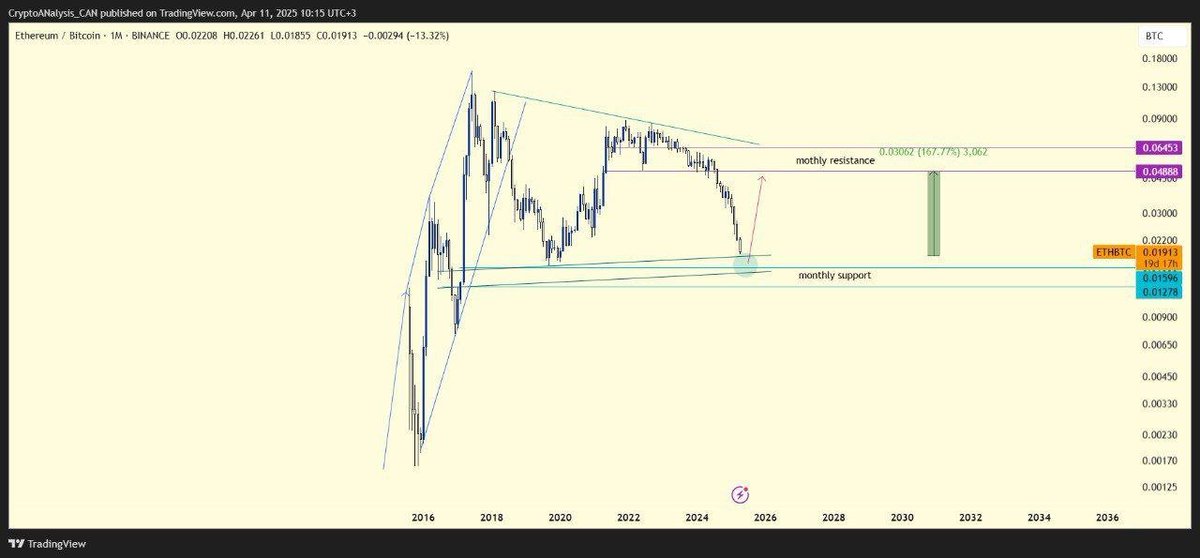Ethereum’s Privacy Puzzle: A Deep Dive into #ETHBTC & #ETH.D Roadmaps
Introduction
In the ever-evolving landscape of cryptocurrencies, Ethereum (ETH) stands tall as the second-largest blockchain by market capitalization. Yet, its transparency, while beneficial in many ways, also presents a significant challenge: privacy. Let’s explore the intricacies of Ethereum’s privacy landscape, examine the solutions proposed by the #ETHBTC and #ETH.D roadmaps, and analyze their potential impacts.
The Privacy Conundrum
Forced Transparency: A Double-Edged Sword
Blockchains like Ethereum and Bitcoin are transparent by design. This openness allows for robust security, community scrutiny, and regulatory compliance. However, this transparency also leads to privacy leaks. Every transaction on Ethereum’s blockchain is publicly visible, allowing users’ financial habits and transactions to be traced and analyzed [1]. This lack of privacy can be uncomfortable, if not downright concerning, for many users.
Privacy in DeFi: A Critical Gap
Decentralized Finance (DeFi) applications, built on Ethereum, have gained significant traction. Yet, the lack of privacy in these platforms poses risks. Users’ transactions can be tracked, potentially leading to financial censorship, targeted attacks, or reputation damage [2]. For instance, an unscrupulous actor could track a user’s transactions to reveal their financial status or even manipulate their assets.
Ethereum’s Privacy Solutions: #ETHBTC & #ETH.D
#ETHBTC: Leveraging Bitcoin’s Privacy
The #ETHBTC roadmap proposes integrating Bitcoin’s privacy features into the Ethereum ecosystem. This would enable users to:
– Aggregate transactions using techniques like CoinJoin, obfuscating their transaction history and making it harder for outsiders to track their activities.
– Conceal transaction amounts using Confidential Transactions, preventing value tracking and protecting users’ financial information.
#ETH.D: A New Privacy-Focused Chain
The #ETH.D roadmap suggests forking Ethereum to create a new, privacy-centric chain. This would allow for:
– Ring signatures to hide the sender’s identity, making it difficult for outsiders to trace transactions back to the original sender.
– Stealth addresses to mask the recipient’s address, protecting the recipient’s privacy.
– Zero-Knowledge SNARKs (ZK-SNARKs) to enable private smart contracts and off-chain computations, allowing users to interact with the blockchain without revealing sensitive data.
Analysis: Challenges and Opportunities
Challenges
– Compatibility: Integrating privacy features without disrupting Ethereum’s existing ecosystem and dApps is a significant challenge. The Ethereum community must ensure that these changes do not break existing tools and platforms.
– Regulatory Compliance: Enhanced privacy could potentially hinder regulatory oversight, raising legal and political hurdles. Regulators may view increased privacy as an obstacle to their efforts to prevent illicit activities.
– Resource Intensity: Privacy-enhancing technologies often come with increased computational and storage requirements. The Ethereum network must ensure it has the resources to support these new features.
Opportunities
– User Adoption: Enhanced privacy could attract a broader range of users, including those from traditionally privacy-conscious sectors like finance and healthcare.
– Regulatory Engagement: Proactive engagement with regulators could help shape a favorable legal landscape for privacy-focused blockchains. By working with regulators, the Ethereum community can demonstrate its commitment to responsible innovation.
– Technological Innovation: The development of privacy features could stimulate further innovation in the Ethereum ecosystem. As the community works to integrate these features, they may also uncover new use cases and technologies.
Conclusion: The Path Forward
Privacy: A Necessary Evolution
As Ethereum continues to grow and evolve, so too must its approach to privacy. The #ETHBTC and #ETH.D roadmaps offer promising solutions, each with its unique set of challenges and opportunities. The Ethereum community must engage in open dialogue, fostering a collaborative environment to navigate these complexities and shape a future where privacy and transparency coexist.
The path forward is not without its challenges, but with careful planning, community engagement, and a commitment to responsible innovation, Ethereum can enhance its privacy features without compromising its core values. By doing so, Ethereum can attract a broader range of users, foster further innovation, and solidify its position as a leading blockchain platform.
References:
[1] Ethereum’s Privacy Problem
[2] Privacy in DeFi: A Critical Gap
Further Reading:
– #ETHBTC Roadmap
– #ETH.D Roadmap
– Ethereum’s Privacy Solutions
– Regulatory Challenges for Privacy-Centric Blockchains











